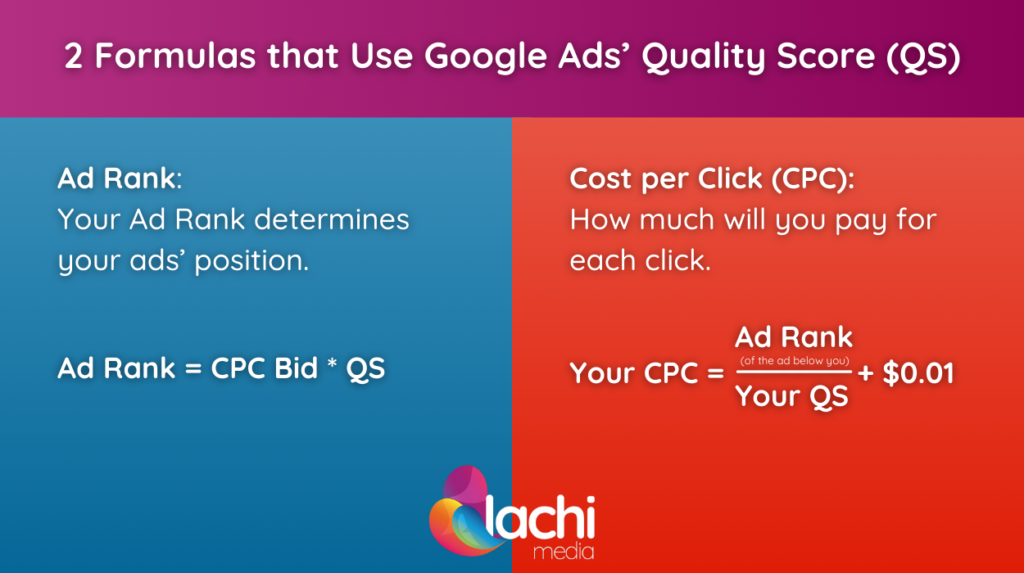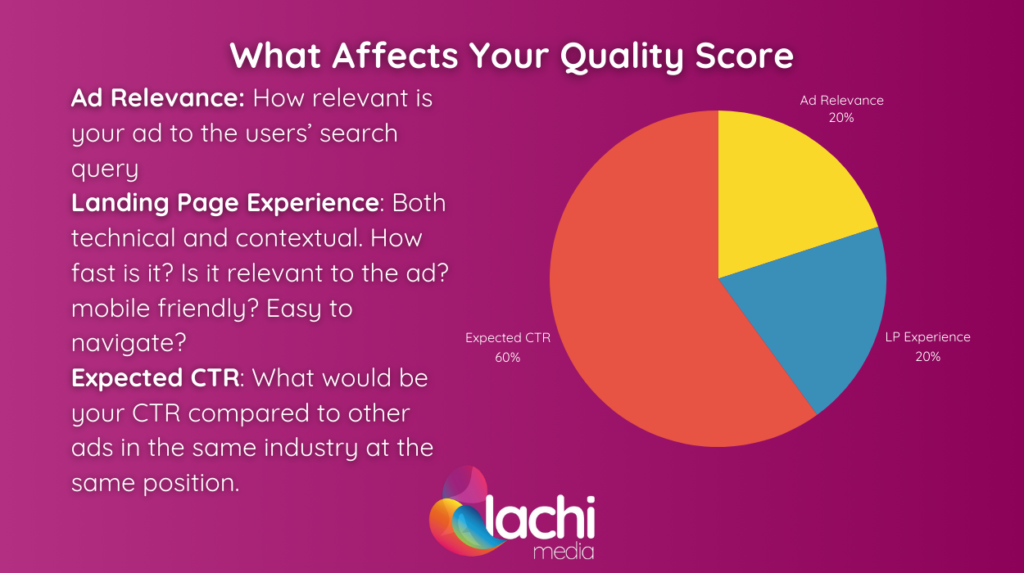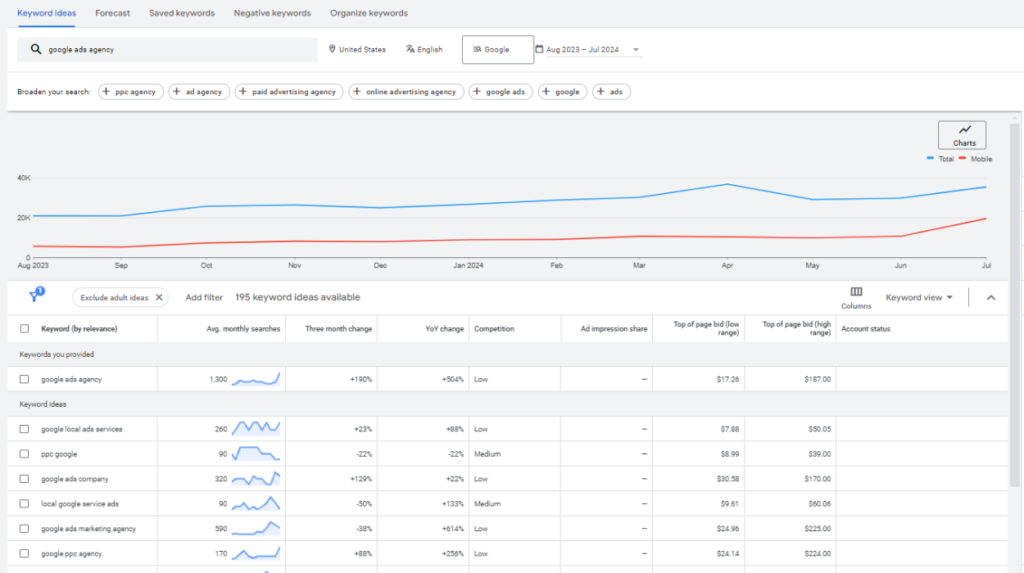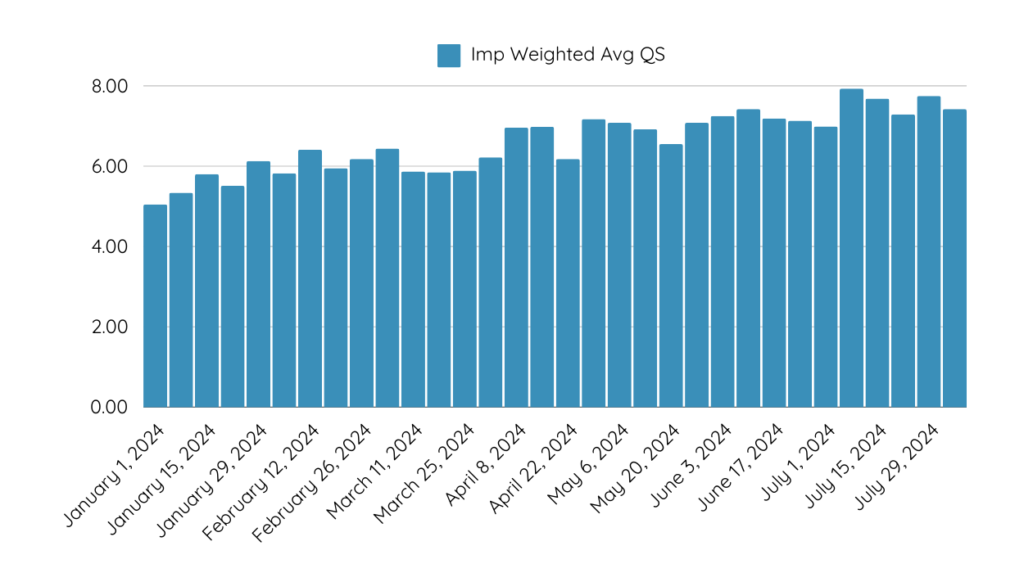Last Updated on August 30, 2025
Quality Score (or QS) is a metric used by Google to determine your Cost per Click (CPC) and position. The higher your QS, the less you’ll pay for clicks, and the higher your ad will be placed. However, although it is one of the most important aspects of your Google Ads campaigns, it is one of the least understood metrics.
Don’t worry, though. In just a few minutes, you’ll know more about Quality Score than most seasoned Google Ads professionals.
Table of Contents
ToggleWhat is Google Ads’ Quality Score
Simply put, the Quality Score is Google’s metric that assesses the combination of a user’s search query, your ad, and the landing page as a whole experience. Is your relevant to the user’s search? Does your landing page satisfy the user’s intent?
What is it used for?
The Quality Score is a crucial part of two different formulas used by Google to determine the most important aspects of showing your ads:
- The order of the ads – What’s your ad’s position
- To set the price for each click – Different advertisers pay differently for each click, not necessarily by the order of appearance.

Understanding the Components of Quality Score
As mentioned earlier, the QS is a simplified score that is affected by three factors: Expected CTR, ad relevance, and LP experience. Google don’t disclose each of the factors’ weight in determining the QS, but after many years of trying to figure it out, I think that this is an accurate representation of things:

Expected Click-Through Rate (CTR)
The higher your CTR, the more attractive Google assumes your ad is. Google compares your CTR (or expected CTR before your ad received enough impressions) to other ads in your industry in the same position.
Ad Relevance
Ad relevance is pretty straightforward. How relevant is your ad to the search query, or more precisely – to the intent of the search query. The higher the relevancy – the better.
Landing Page Experience
The evaluation of the landing page experience is both contextual (relevancy) and technical (loading speed, ease of navigation, SSL, and mobile usability). Having a relevant landing page that is also fast, secure, and user-friendly will help increase conversions and improve the quality score.
How to Improve Your Google Ads’ Quality Score
1. Conduct an Effective Keyword Research
A good keyword research not only helps improve QS, but is mainly aimed at targeting keywords that represent what you can offer the user.
Target High-Intent Keywords
High-intent keywords signal that a user is ready to buy or hire you for a service. For us, for example, a low-intent keyword could be “should I hire a marketing agency?” while high-intent keywords would be “Google Ads agency for home services company” to “marketing agency for an e-commerce business”.
Use Negative Keywords
Think of negative keywords as a way to fine-tune your campaign to prevent your ads from showing to irrelevant users while excluding as few relevant users as possible. Make frequent visits to your search terms results and add negative keywords to your ad groups, campaigns, and account.

2. Write Relevant and Engaging Ad Copy
Your ad copy sits right in the middle between the keywords you’re targeting and the landing page.
Match Ad Copy to Keywords
Include your keywords and their variations naturally within your headlines, descriptions, and display URL. Use DKI and other ad customizers to improve your ads even further.
Use Compelling Calls to Action (CTAs)
An appropriate and strong call to action will more than likely increase your CTR and, thus, improve your quality score. Beyond that, it will most likely increase your conversion rate as well, which is, on its own, a reason to do it more often.
3. Improve Landing Page Quality
A good landing page that is user-friendly and meets the user’s expectations will most likely do your business a really good service, even if it doesn’t help improve your QS.
Speed p your Website
As the years go, users are less and less patient for slow websites. Pages that take more than 5 seconds to load on mobile were considered good back in 2010, while today, anything below 1-2seconds is showing a clear drop in conversion rate.
Use tools like Google PageSpeed Insights to measure your loading speed and see how to improve it.
Create Relevant, User-Friendly Content
The content in your LP should fit your ad and your keyword, while encouraging your users to schedule an appointment, buy, sign up, or give your their contact details.
Write about your expertise in satisfying user intent and establish yourself as someone who can solve the user’s problem.
Your users would appreciate it, and so would Google.
4. Optimize for Mobile Users
Mobile makes up for around 80% of web traffic. Let that sink in for a second. Out of every 10 web visits, 8 are using a mobile device.
Responsive Design for Mobile Ads
Make sure your page is mobile-friendly, easy to navigate, and with clear buttons that are not too close to each other. Place the most important elements in the easy-to-reach area of the screen so your users have an easier time converting.
5. Test Different Variations of Your Ads
The way to test different variations of your ads changed drastically in the last couple of years, since the introduction of responsive search ads. But the principles remain the same: replace poor-performing assets with better ones.|
Today, Google will show you quickly what works and what doesn’t so you can keep improving your ad copy.
6. Use Every Type of Ad Extension You Can
The bigger your ad, the more “real estate” it would have on the search results page. Take advantage of as many ad extensions as you can, within reason.
8. Monitor and Adjust Based on Performance Data
Your Quality Score is re-calculated every time a search triggers one of your ads, many times per day. Don’t be too granular because it’s not actionable, but try to record your quality score a couple of times per day and look at them in a weekly or by-weekly matter.

Myths About Quality Score
Myth #1: You Can Improve Your QS by Raising Your Bids to Achieve a Higher Position, Raising Your CTR.
I hear this from many people, clients, and advertising professionals alike, and it’s just not true. Your CTR is not measured compared to other advertisers that appear with you in general, but with other advertisers’ CTR compared to yours while you’re in the same position.
Google takes your average CTR on the searches you were at the top position and compares it to the CTR your competitors have when they’re at the top. The same goes for the rest of the positions, so bidding high to show your ad on the first result won’t help your QS; it might even reduce it by forcing Google to compare your ads to a better-performing one.
Myth #2: Your Quality Score Only Affects Your CPC
Well, I understand why one would think that, but the fact is that a high enough QS can get you a better position as well.
You can show your ad above your competitor whos bid higher, if your QS is higher than theirs.
Myth #3: As long as your keywords are relevant, your ad relevancy should be good
With Google’s hard push toward broad match keywords, many relevant keywords can trigger your ads to appear on unrelated terms. To battle that, you should compile a list of negatives as a part of your research and go over the search term report frequently.
This would both increase your expected CTR and your ad relevancy score.
Myth #4: You must monitor QS daily to ensure constant improvement
Each keyword’s quality score is updated each time it triggers an ad, so monitoring it too closely can introduce a lot of “noise” into your data. You’d be better tracking it with a script and measuring a moving 7-day average over a long period of time.
Myth #5: An easier and more effective way of improving QS is to find a workaround
I’m nop stranger to tricks to improve QS, and I have even published an article showing one of them back in 2016. That being said, the only sustainable and consistent way of improving your QS as well as improving the results of your campaigns is to do the work and improve keyword relevancy, LP experience, and CTR.
Myth #6: Your Quality Score is tied to your conversion rate – the higher your conversion rate, the higher your QS.
There’s no direct line between them. Improving your conversion rate won’t affect your quality score. That being said, QS and CvR are highly correlated, because a highly engaged user that saw a relevant ad, clicked on it, and went through a well-performing and selling landing page is a lot more likely to convert.
Finishing Thoughts
Maintaining a high quality score can drastically improve your performance and save quite a bit of money – significantly improving the ROI. Gaining higher average positions while paying less per click should be a good enough reason to do it, shouldn’t it?
Improving and maintaining a high quality score should be part of your optimization routine, but not the only thing you do.